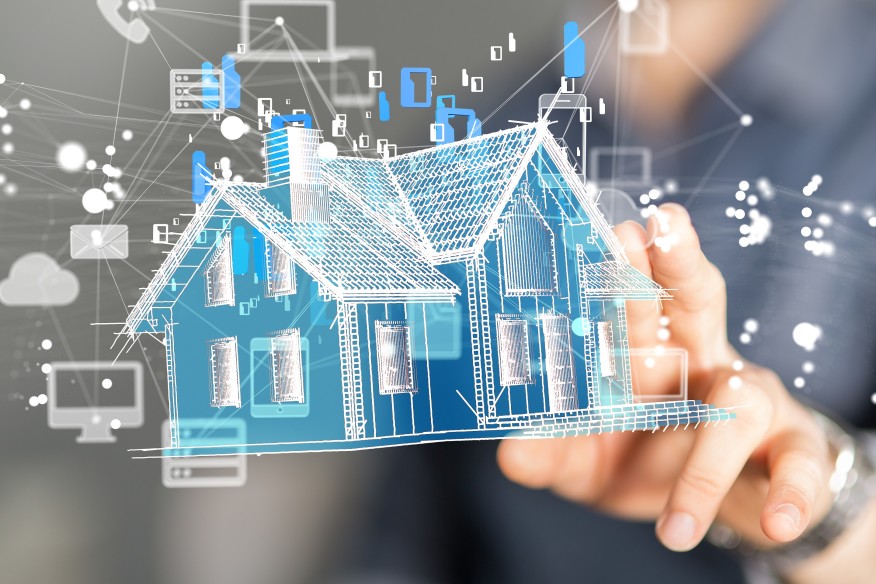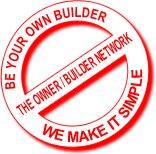Trouble Seeing this Email? Try viewing it in a web browser.
|
|
|||
From the Founder of Owner Builder NetworkHappy New Year everyone. What a year we had in 2019. Lumber prices up and down. Gas prices up and down and let's not talk politics so we can all just keep a smile on our faces. We come into 2020 with a lot of good remnants from the year past. Lumber prices are down, gas prices are fair, interest rates are still low, values are holding, we are not flooding in the Houston area and we are not at war. We really do have a lot to be thankful for. We are proud of what we do at Owner Builder Network. We are now entering into our 24th year. We finished out the year with 8 repeat customers coming back after 6 to 10 years. They sold their past home through us at a good profit and are or have rebuilt their "last" home through us again. As the years have passed we have adapted to give our customers the same control of money, quality and contractors but we do a lot more hand holding than before. One of those things is a separate construction department to work with at our office once you are closed and funded. You may ask why is that important? It is because they deal all day long 5 days a week with the subs, suppliers, pricing, plans, permits, draws, calls, emails, concerns and anything else that comes up or could come up while in construction. They are not meeting with customers to sell them and working on commission to get more money by selling more. That being said it gives your consultant the time to meet with you, explain how we work, get the correct docs sent out for financing, help you with your plans so they stay within the budget of what you qualify for and get you to the closing table for the construction department and the rest of the team to get you into your new home. Our repeat customers love the fact that we solicit the bids through dry wall within the contractors on our list. They get weekly emails and phone calls checking to make sure you are fine and do not need anything. If you are still planning on building please call us and bring your plan idea and land info so we can see if we can start now or what needs to be done. We cover qualifying, budget, and answer any other questions you may have. If you do not have land yet or blueprints that is better yet. We can let you know about how much your home will cost and how much you need to spend on your land. Once we have done that we have a realtor we send your information to and let them know where you are looking for land and the dollar amount you need to stay at (we have many people that buy land and get with a designer for plans. After spending several thousand they find that they over designed compared to what they either want to spend or qualify for. Then they have to wait to save money, pay their land down more or pay to redesign). We also help you with Blueprints. As I have said for years, "It is not what it is, it is what it can be." If you have already been in to see us and you are wanting to possibly be in your new home by the end of next year we need to get started today. Call us at (281) 356-9050. Once again, Happy New Year from all of us at Owner Builder Network.
Back to HealthBy Dr. Lindsey Thomas, DC 
The Power of PlaytimeThe Power of Playtime is upon us once again! There was a time when children played from morning until night. They ran, rode bikes, played ball, and created endless stories out of their active imaginations. Now, many rarely play this way at all. So what has happened? Today, children spend over four and half hours per day watching TV, video games, and computer screens. Parents need to remember that although "educational" video games have been developed for babies up to young adults, they do not stimulate the same neural pathways in the brain as active play activities. Play activities should include stimulation of all five senses (sight, touch, sound, smell, and taste). Academic pressure is beginning at younger and younger ages. Many kids find themselves spending much of their time after school at the kitchen table doing homework, leaving very little time to play before bedtime. Overscheduled lives full of organized activities and loss of school recess also contribute to this growing trend. The consequences for a generation of children suffering from lack of activity and poorly developed motor skills is leading to an overwhelming number of unhealthy and overweight children. The staggering consequences of overweight and obese children are shorter lifespans and heart disease risk factors evident in preschoolers—yes, preschoolers. According to the Centers for Disease Control, one in three American children born in the year 2000 will develop Type 2 diabetes, formerly called "adult-onset" diabetes because it was so rarely seen in children. Clearly, these trends cannot continue. The future must involve returning play and physical activity to childhood. The first step toward change must be a new shift in priorities, on the home front and within communities. We must realize that the mind and body are interdependent and that children need to play and move in order to function optimally, both physically and intellectually. This will ensure that, whether at home or at school, children get a healthy, daily dose of play and physical activity, preferably outside. Decades of research clearly demonstrate that play, active and full of imagination, is more than just fun and games. It boosts healthy development across a broad spectrum of critical areas: intellectual, social, emotional, and physical. The benefits are so impressive that every day of childhood should be a day for play. The benefits of play: Child-initiated play lays a foundation for learning and academic success. Through play, children learn to interact with others, develop language skills, recognize and solve problems, and discover their human potential. Physical development: The rough and tumble of active play facilitate children's sensorimotor development. It is a natural preventive for the current epidemic of childhood obesity. Research suggests that recess also boosts school children's academic performance. Academics: There is a close link between play and healthy cognitive growth. It lays the foundation for later academic success in reading and writing. It provides hands-on experiences with real-life materials that help children develop abstract scientific and mathematical concepts. Play is critical for the development of imagination and creative problem- solving skills. Social and emotional learning: Research suggests that social make-believe play is related to increases in cooperation, empathy, and impulse control, reduced aggression, and better overall emotional and social health. What you can do to help your child play? Reduce or eliminate TV: Give your children a chance to flex their own imaginative muscles. They may be bored at first. Be prepared with suggestions for make-believe play to inspire their inner creativity. Choose simple toys: A good toy is 10% toy and 90% child. The child's imagination is the engine of healthy play. Simple toys and natural materials like wood, boxes, balls, dolls, sand, and clay invite children to create their own scene and then knock them down and start over. Encourage outdoor adventures: Reserve time every day for outdoor play where children run, climb and find secret hiding places. Natural materials like sticks, mud, water, rocks are the raw materials of play. We are all hardwired to move and play. Start incorporating these active play activities into your child's daily routine and most importantly, have fun with your child. Good play routines can last a lifetime. Always remember your infant or child is never "just moving" or "just playing". Every action improves upon your child's development in some way! Source: Dock Line Magazine HERE'S A VIEW OF THE FUTURE OF BUILDING PRODUCTS AND MATERIALSBy John McManus 
Together, products represent a step-change in residents' expectations of tomorrow's homes. In isolation, they may diminish in value. Humanity's first houses, evidence of which traces back 250,000 to a half-million years ago, were simple. They were structures, assembled of found materials into shelter, an envelope, if you will, protecting inhabitants from harm and disturbance of various kinds, ranging from Mother Nature to predators on two, four, and a hundred legs. Eventually houses, like people, evolved beyond the enclosure, For additional safety, convenience, and well-being, houses began to include systems. In the relatively recent past century or two, software circulating through sheltering structures carried warmth, light, power, water, airflow, sound, and an exponentially expanding array of resources in, out, over, around, through, and inside the enclosure. A rapid evolution of home software along with scientific improvements of various kinds to materials performance features and functions gave us the iconic 20th Century house, which for most working American households, consists of structure and systems in relatively equal measures whose happy combination we know today as "livability." We're beginning to recognize that the blend—of well-evolved structures or enclosures and well-integrated systems or software—is only the threshold of yet another steep learning curve in-home design, development, and engineering's path of progress. If safety might serve as the best single word to characterize a most-basic need humans fulfill through house structure, and comfort reflects a move up in our hierarchy of needs, leading to this harmonious blend of building envelope and home systems, what's the next logical step in this ascending ranking? Increasingly powerful and inexpensive microprocessors and RFID sensors—the material building blocks of the Internet of Everything—provide at least a keyhole view of the answer. As microchips and sensors—and the oceans of algorithmic solutions-oriented data that flow back and forth between humans and their immediate and remote environment—engage us as they do now, in their exponential potential in our lives, the very core nature and essence of the home as a beacon of structure and systems changes. Now, both materials that make up the DNA of our homes' structure and manufacturers' products and sub-components that comprise the brains and circulatory systems of our living experience inside our dwellings are beginning to get recognition at their molecular and biodata level role in our safety, our comfort, and more. Products, what ingredients and powers and potentials they're made of and materials, whose biological, microbial, and informational codes are only now beginning to be mapped, understood, and reapplied to their function in our shelter and well-being, literally perform according to a new mission and purpose in our lives as inhabitants of homes. Increasingly, a product in a home—from the standpoint of growing expectations of those who buy them, live in them, and eventually may want to sell them—serve a role beyond safety and beyond comfort. Each discrete product—as much as it may represent a node whose value, independent of its connection and relationship to a whole living experience, may be quantifiable to some degree—becomes an integrated, dynamic passageway, in real- time and over time to what people know as an experience of ease, of calmness, of serenity, of well-being, of prospering. Ease of use, reliability, seamlessness, logic, privacy and security, evolve-ability, sustainability, resilience irrespective of drastic environmental disturbance, and in general, a holistic, indistinguishable relationship to the very value of a home— all of these properties have become essential characteristics of building products and materials in our new homes. Products, materials, and their molecular and data make-up now serve as critical gateways to humanity's next era in what they expect and value in a home and a community. They're where the building enclosure and systems promises of home performance now open up to entirely new vistas of human value, the value we currently describe as experience. Beyond safety and durability, we arrived at comfort and energy performance in our homes. What's next—and it's being unlocked through ever cheaper, ever more potent microchips and sensors and the zeroes and ones of data and the greater and greater understanding of our microbiological multitudes—introduces us to an era of intentional, engaged, and engaging experience as our homes become nodes of ongoing relationship and service. A product in isolation, then, may be of diminishing value. Source: Builder |
|||
|
You have received this email because you provided your email address to Owner Builder Network |
|||
|
Houston OBN |
|||


